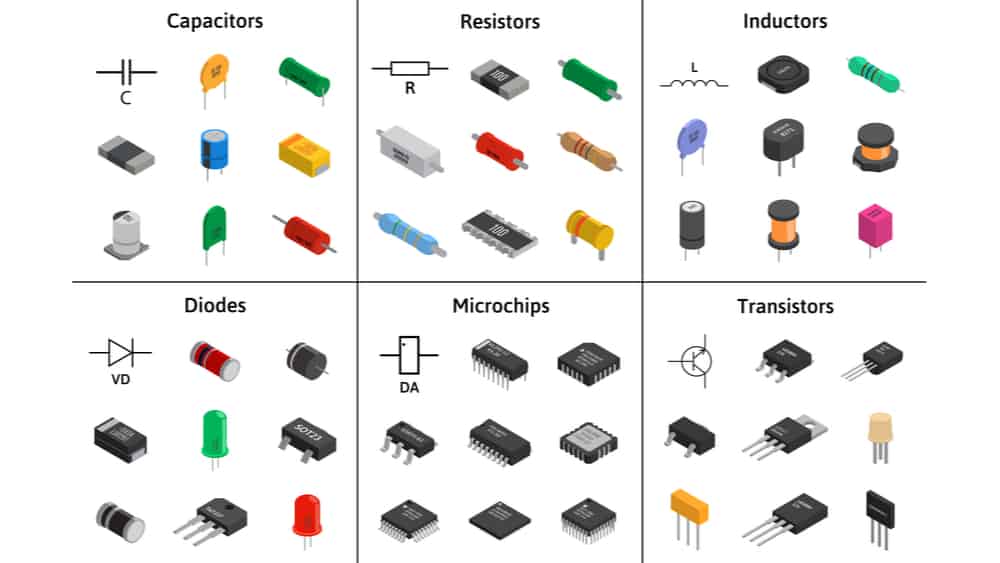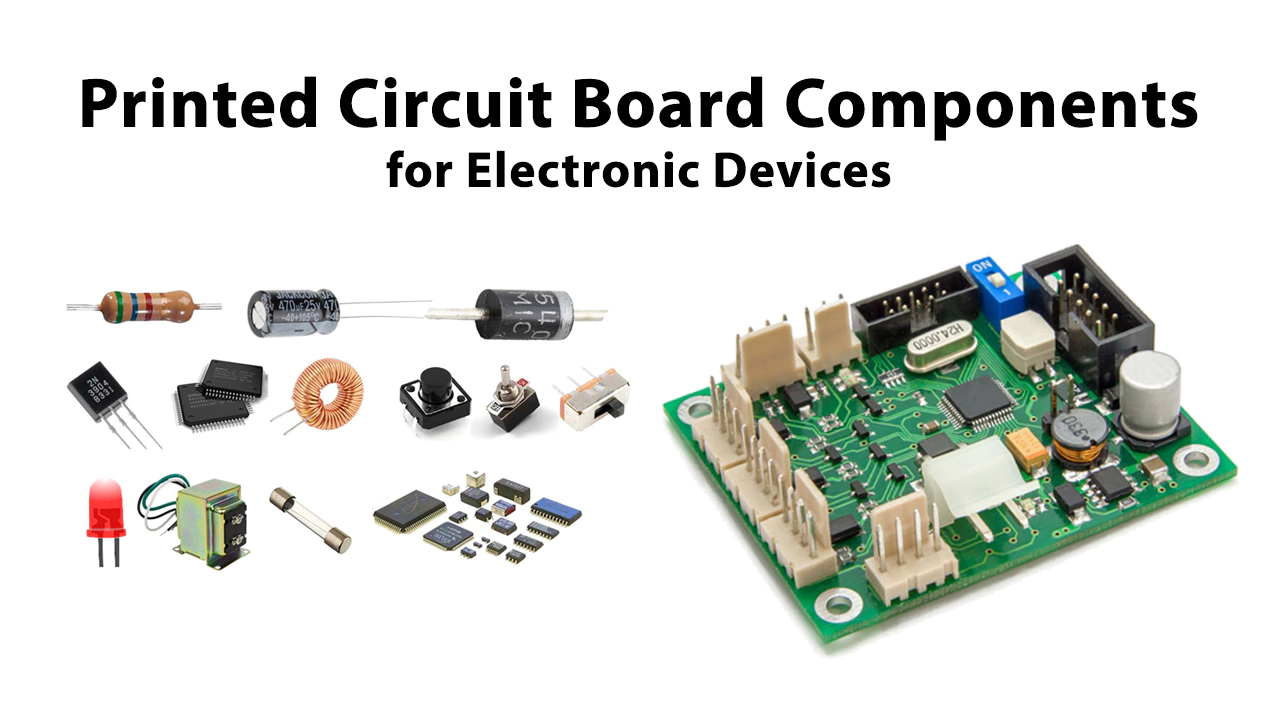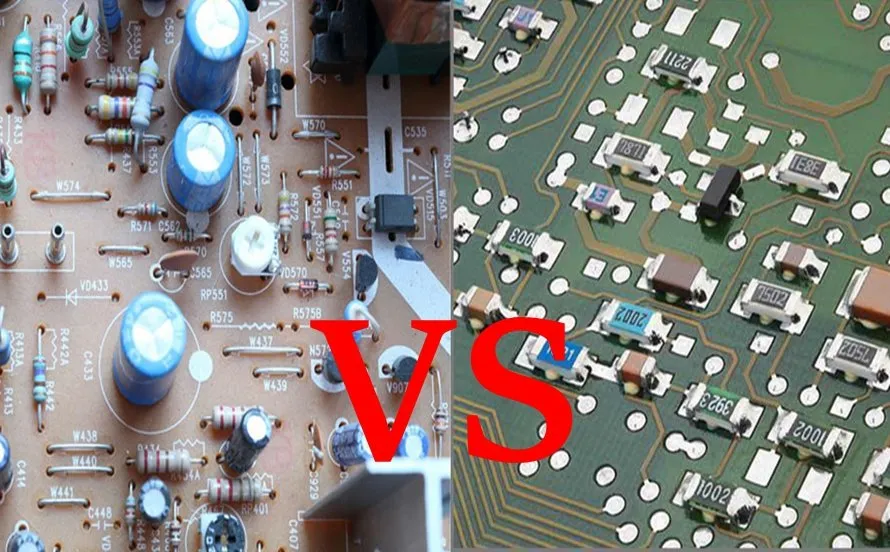Printed Circuit Boards (PCBs) are the backbone of modern electronics, powering everything from smartphones to industrial machinery. At the heart of every PCB lies its components—commonly referred to as PCB board parts—which work together to ensure functionality, reliability, and performance. Whether you're an engineer designing a new circuit or a buyer sourcing components for production, understanding these parts is critical to success. In this blog, we'll dive deep into the world of PCB board parts, exploring their types, functions, and key considerations for selecting and integrating them into your designs.
Why does this matter? With the global PCB market projected to reach $89.7 billion by 2026, driven by demand in automotive, aerospace, and consumer electronics, the stakes are high. A single misstep in choosing or placing PCB board parts can lead to costly delays or product failures. Let's break it down step-by-step to equip you with the knowledge you need.
What Are PCB Board Parts?
PCB board parts are the individual components that populate a printed circuit board, enabling it to perform its intended function. These parts are mounted or soldered onto the PCB's surface or inserted into pre-drilled holes, forming a complete electronic circuit. From resistors that regulate current to microchips that process data, each part plays a specific role in the system.
Broadly, PCB board parts fall into two categories: active components (which require power to operate, like transistors and integrated circuits) and passive components (which don't, like resistors and capacitors). Together, they create the electrical pathways that bring devices to life.

Essential Types of PCB Board Parts
To design or procure a functional PCB, you need to know the core components. Below, we'll explore the most common PCB board parts, their purposes, and typical specifications engineers encounter.
1. Resistors
Resistors limit the flow of electrical current, protecting other components from overload. They're measured in ohms (Ω), with values ranging from a few ohms to several megaohms depending on the application. For example, a high-speed signal circuit might use a 50Ω resistor to match impedance and minimize signal reflection.
- Function: Control current and voltage.
- Example Use: In an LED circuit, a 330Ω resistor prevents the LED from burning out by limiting current to safe levels (typically 20mA).
2. Capacitors
Capacitors store and release electrical energy, smoothing out voltage fluctuations or filtering signals. Their capacitance is measured in farads (F), though most PCB capacitors range from picofarads (pF) to microfarads (µF). A 10µF capacitor might stabilize power in a microcontroller circuit.
- Function: Energy storage and signal filtering.
- Example Use: In a power supply circuit, capacitors reduce ripple voltage from 500mV to under 50mV.
3. Transistors
Transistors act as switches or amplifiers, controlling larger currents with smaller signals. Common types include Bipolar Junction Transistors (BJTs) and Field-Effect Transistors (FETs), with current ratings often in the range of 100mA to several amps.
- Function: Signal amplification or switching.
- Example Use: A MOSFET transistor in a motor driver circuit switches a 12V, 2A load using a 3.3V signal.
4. Integrated Circuits (ICs)
ICs are miniature circuits packed into a single chip, performing complex tasks like processing or memory storage. They range from simple 8-pin operational amplifiers to 100+ pin microprocessors with clock speeds exceeding 1GHz.
- Function: Data processing, control, or amplification.
- Example Use: An ESP32 IC in a Wi-Fi module handles 2.4GHz wireless communication.
5. Diodes
Diodes allow current to flow in one direction only, protecting circuits or converting AC to DC. A common example is the 1N4148, rated for 200mA and 100V.
- Function: Current direction control and rectification.
- Example Use: A diode in a solar panel circuit prevents reverse current flow at night.
6. Connectors
Connectors link the PCB to external devices or other boards. Examples include USB ports, pin headers, or Molex Mini-Fit Jr. connectors, with current ratings from 1A to 10A.
- Function: Interface and power/data transfer.
- Example Use: A 2.54mm pin header connects a sensor module to the PCB.
7. Inductors
Inductors store energy in a magnetic field, often used in power supplies or RF circuits. They're measured in henries (H), typically microhenries (µH) for PCBs.
- Function: Energy storage and noise filtering.
- Example Use: A 10µH inductor in a buck converter stabilizes output voltage at 5V.

How PCB Board Parts Work Together
A PCB isn't just a collection of parts—it's a system where each component interacts. Consider a simple audio amplifier circuit: an IC processes the input signal, resistors set the gain (e.g., 10x amplification), capacitors filter noise, and a connector outputs the sound to a speaker. If the resistor value is off by even 10%, the gain could drop, distorting the audio.
Signal integrity is another key factor. High-speed designs, like those operating at 1Gbps (e.g., PCIe), require precise impedance control—often 50Ω or 100Ω—achieved by pairing resistors and capacitors with the PCB's trace layout. A mismatch here could increase bit error rates from 10?¹² to 10??, rendering the circuit unreliable.
Key Considerations When Selecting PCB Board Parts
Choosing the right PCB board parts isn't just about function—it's about balancing performance, cost, and manufacturability. Here's what engineers and buyers should keep in mind:
1. Electrical Specifications
Match components to your circuit's needs. For a 3.3V microcontroller, a capacitor rated for 6.3V is sufficient, but a 5V system might need 10V-rated parts to avoid breakdown.
2. Size and Footprint
Smaller parts save space but can complicate assembly. A 0402 resistor (1mm x 0.5mm) fits tight layouts, while a 1206 (3.2mm x 1.6mm) is easier to solder manually.
3. Temperature Tolerance
Components must withstand operating conditions. A capacitor rated for 85°C will fail in an automotive application hitting 125°C—opt for 150°C-rated parts instead.
4. Availability and Cost
Supply chain disruptions can delay projects. A $0.10 resistor might jump to $1 during shortages, so consider alternatives or bulk purchasing.
5. Compatibility with PCB Design
Surface-mount (SMT) parts dominate modern PCBs for automation, but through-hole components remain in high-power applications. Ensure your PCB layout supports the chosen type.

Common Challenges with PCB Board Parts
Even with careful selection, issues arise. Here are three frequent challenges and how to address them:
1. Component Overheating
High-power parts like transistors can exceed 150°C, damaging nearby components. Solution: Add heat sinks or increase PCB copper thickness to 2oz (70µm) for better heat dissipation.
2. Signal Interference
In PCB RF design, a 2.4GHz signal can couple with nearby traces, causing noise. Solution: Use shielding or space components 5mm apart to reduce crosstalk.
3. Solder Joint Failures
Poor soldering of a 0.5mm-pitch IC can lead to open circuits. Solution: Use reflow ovens with precise temperature profiles (e.g., peak at 245°C for lead-free solder).
Trends Shaping PCB Board Parts in 2025
The PCB industry evolves rapidly, and 2025 brings new trends impacting component design and selection:
1. Miniaturization
Demand for compact devices drives smaller parts, like 0201 resistors (0.6mm x 0.3mm), enabling denser layouts.
2. High-Frequency Materials
5G and IoT push for low-loss components, such as 10nH inductors optimized for 6GHz signals.
3. Sustainability
Eco-friendly parts, like lead-free capacitors, align with regulations like RoHS, reducing environmental impact.
How ALLPCB Supports Your PCB Board Parts Needs
For engineers and buyers tackling complex projects, partnering with a reliable manufacturer is key. ALLPCB offers quick-turn prototyping—delivering boards in as little as 24 hours—ideal for testing component layouts fast. Our global logistics ensure parts and boards reach you on time, while advanced manufacturing capabilities, like HDI and multilayer PCB production, support the latest high-density designs. Whether you're sourcing resistors for a prototype or scaling up with ICs for production, we streamline the process so you can focus on innovation.
Conclusion: Mastering PCB Board Parts for Success
PCB board parts are more than just components—they're the building blocks of innovation. By understanding their roles, selecting them wisely, and staying ahead of trends, engineers and buyers can create reliable, high-performing circuits. From the humble 1kΩ resistor to the cutting-edge 5G IC, each part matters. As you design your next PCB, consider the interplay of specifications, layout, and real-world challenges to ensure your project thrives.
Got questions about PCB board parts or need help with your next design? Drop us a line—we're here to assist!

 ALLPCB
ALLPCB







